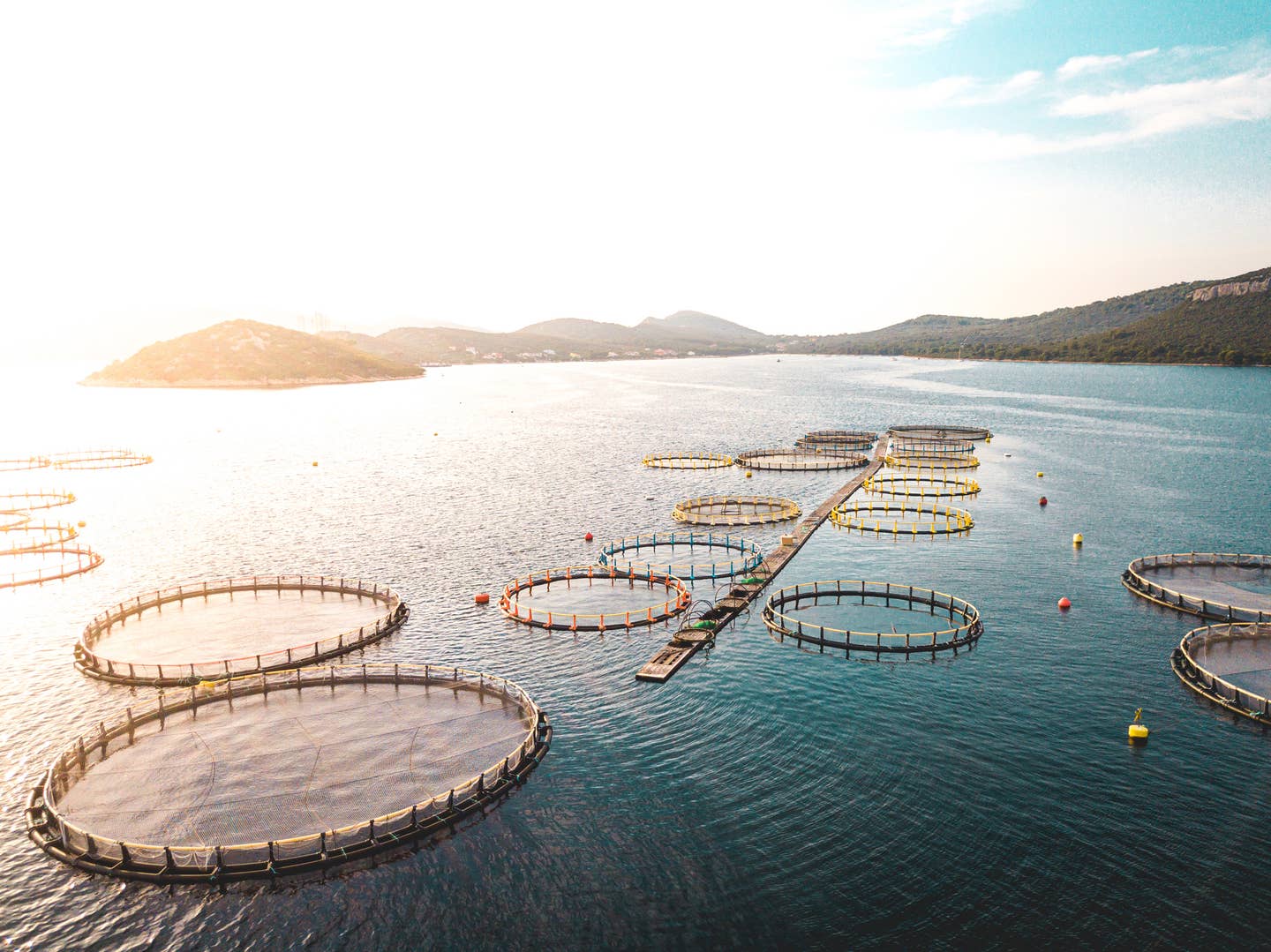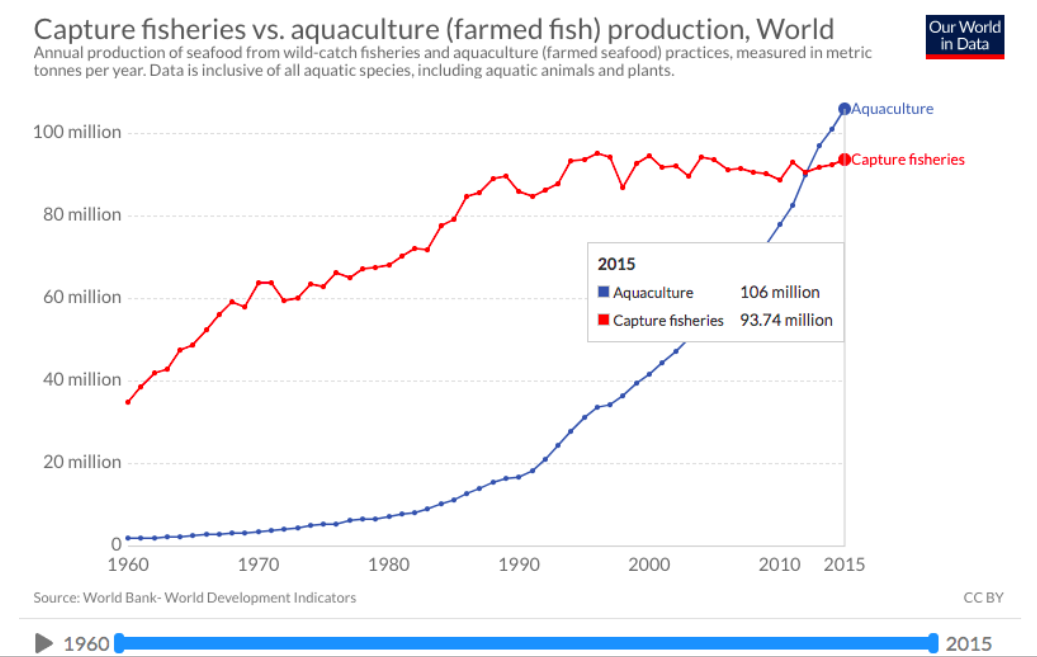
Why Fish May Not Be As Healthy As You Think: The Hidden Dangers of Fish
If you're eating fish in order to be your healthiest, you may be doing yourself more harm than good, according to new studies that question whether a steady diet of fish is actually a healthy choice. Fish now harbor pollutants and other micro-particles that can cause health threats to humans. Most of it has to do with the way fish are farmed or caught, and what's in the water.
Is Eating Fish Healthy?
The oceans are full of pollutants such as microplastics (which get into the fish you eat) as well as mercury and PCBs, heavy metals that get passed along to you. And farmed fish are raised in overcrowded tanks full of feces, pesticides, antibiotics, and chemicals, so the question becomes: Is fish a "faux health food" that we will eventually realize is tied to cancer? That day may have arrived, according to experts researching the question: Does fish increase your risk of cancer and found an increased rate of melanoma among frequent fish eaters.
Eating fish? You may also be consuming contaminants including:
- Mercury (farmed and wild fish)
- PCBs or Polychlorinated biphenyls (farmed and wild fish)
- Dioxins (farmed fish)
- Pesticide elements (farmed fish)
- Fecal matter (farmed fish)
- Nano-plastic particles (ocean swimmers)
- Sea Lice (farmed fish)
The Dangers of Eating Fish, and Why It's Bad for the Environment
Whether you are eating caught fish or farmed fish, there are potential dangers to you and to the environment in the current practices of raising or catching fish.
According to a recent report on the "aquaculture" of the world's most popular farmed fish and species from the UN's Food and Agriculture Organization, it's a more likely scenario that the menu item you ordered at that restaurant was raised, not caught. A report on the most commonly raised fish and seafood comes from jobmonkey.com.
Here are the five fish most commonly farmed for food:
1. Catfish. This is produced in the south, usually in states surrounding the Gulf of Mexico, and is popular due to the animal's high survival rates and efficiency.
2. Carp. Carp is part of the same family as minnows, and are grown in Asia and the Pacific, with China being the top producer.
3. Salmon. Salmon has a high profit margin because it can be sold for luxury prices. Most come from Canada and Alaska as well as Norway.
4. Tilapia. Tilapia has become increasingly popular to farm because it is easy to produce. Grown in the southern U.S., it is inexpensive, but one of the least healthy fish due to the fact that it is a "bottom feeder" so it eats the waste in the tanks.
5. Clams and Oysters. Growing and raising mollusks is inexpensive since they feed on seawater and its components (meaning pollutants) so they capture these and clean the water. Great for the other fish, but not for the person eating them since they are often full of pollutants depending on where they are grown and how clean the water is.
Why is Mercury Bad for You?
Exposure to mercury above threshold levels can cause neurological and behavioral problems, including:
- Mood swings
- Anxiety
- Depression
- Memory loss
- Tremors
- Numbness or "pins and needles"
- Loss of motor skills
- Difficulty breathing
- Vision problems
- Muscle weakness
Yet despite the fact that fish is the biggest source of mercury in our food system, it has been sold to Americans as a heart-healthy alternative to meat, pork, or poultry, even though some sources say that fish like tilapia, which is a bottom feeder, is no healthier than bacon.
Can Eating Fish Cause Cancer?
A new study found that eating fish several times a week Increases your skin cancer risk. The study concluded that people who consumed an average of 1.5 ounces of fish a day (or 3 ounces every other day, which would be about the amount in a tuna salad sandwich) experienced a 22 percent higher risk of malignant melanoma – and 28 percent higher risk of developing abnormal cells in the outer skin layers – than those who didn't consume nearly as much fish (about one-tenth of an ounce daily on average).
The culprit, the study authors found, can be traced to the pollutants that are found in fish. In other words, the fish we eat today is not as healthy as the fish your grandmother ate 50 or more years ago.
The study examined the differences between the three categories of fish products that people consumed. Most significantly, those consuming 14.2 grams (0.5 ounces) of tuna showed a 20 percent higher risk of malignant melanoma and 17 percent higher risk of stage 0 melanoma than those who consumed 0.3 grams (0.01 ounces) of tuna.
What Are PCBs and Why Are They Harmful?
PCBs, which stand for Polychlorinated biphenyls, is a catch-all for a group of 209 different chemicals that share a common structure but vary in the number of attached chlorine atoms they have.
PCBs have been banned internationally since 2000, but before then they were routinely dumped into tributaries such as the Hudson River, where an estimated 1.3 million pounds of different types of PCBs were sent by General Electric from 1946 until 1977. Fish eaten from the Hudson were linked to higher rates of cancer back then.
Now PCBs end up in the fish you eat, including farmed fish such as salmon and bass. PCBs can cause cancer and other harmful health effects, according to the California Office of Environment Health Hazard Assessment.
In general, bottom-feeding fish such as tilapia, striped bass, bluefish, and sea trout, and larger predator fish such as bass, and lake trout, caught in contaminated waters contain higher levels of PCBs. Salmon that have been farmed are generally fed ground-up fish and so it also has higher levels of PCBs than wild-caught salmon, according to experts at the Mayo Clinic.
The EPA recommends that if you do eat fish, trim fatty areas, which is where PCBs are stored. Remove the skin and allow fat to drain. Grill or broil fish to allow fat to drain off, and avoid deep frying since frying seals in the chemical pollutants that are in the fat of the fish.
The Physicians for Social Responsibility and the Association of Reproductive Health Professionals both suggest limiting fish consumption including salmon and bluefish.
Studies of PCBs have shown they are a likely carcinogen in humans and have been found to cause increased rates of:
- Melanomas
- Liver cancer
- Gall bladder cancer
- Biliary tract cancer
- Gastrointestinal tract cancer
- Brain cancer
- Possibly breast cancer
Can Fish Cause Hepatitis?
Fish Are High In TMAO
Are Fish Good for You and the Environment?
Eating fish is on the rise, according to a report in Sentient Media. People believe eating fish is healthier for them and better for the environment, or more sustainable than eating meat. But in fact, fish require an inordinate amount of food to sustain raising them.

Fish farming is harmful to the environment
Critics of how fish farms are run say that seafood producers pollute the environment with the runoff of untreated fish waste, antibiotics, and other harmful chemicals that end up in the tanks. Meanwhile, they grow massive quantities of farmed fish at the lowest possible cost, all while polluting the surrounding environment.
Even farmed fish have to eat smaller wild fish from the ocean, and it can require five pounds of smaller wild fish to produce just one pound of fish meat from salmon or bass, two of the most common fish raised on factory farms.
Trawling with nets for fish (to feed the fish being grown inland on fish farms) ends up capturing anything in the huge net’s path, including dolphins, sea turtles, whales, sharks, and other threatened marine life.
When the seafood producers need to flush out fish tanks, toxic waste gets emptied into the surrounding environment which allows waste products, including feces, uneaten food, and dead fish to get washed into lakes, rivers, and tributaries, where it further pollutes our water.
Trawling for fish leads to overfishing
If you need any more evidence that fishing is bad for the environment, watch Seaspiracy, a documentary about the devastating effects of overfishing and how trawling nets capture everything from turtles and dolphins to birds and other unintended victims.
Even if you think sharks are scary predators, they are important players in the ocean's ecosystems, and the overfishing of sharks is having unintended consequences for other sea life and the important balance in the world's largest ecosystem.
The 7 Best Plant-Based Sources of Omega 3 Fatty Acids
4. Flaxseeds have 1.8 grams of Omega-3s per tablespoon or a whole day's worth.
5. Edamame has 0.55 grams of Omega-3s per cup.
6. Kidney beans have .19g of Omega-3s per cup.
7. Brussels sprouts have .135 g of Omega-3s in 1/2 cup.
Bottom Line: Fish is Not the Health Food You Thought, and Is Full of Pollutants
Because of the way fishing is done, through polluted and overcrowded fish farms, and our compromised polluted oceans, fish carried harmful mercury and PCBs that can cause health problems and have been linked to neurological problems and cancer. If you love the taste. offish try these plant-based fish alternatives.
For more great content read The Beet's Health & Nutrition articles.
More From The Beet






